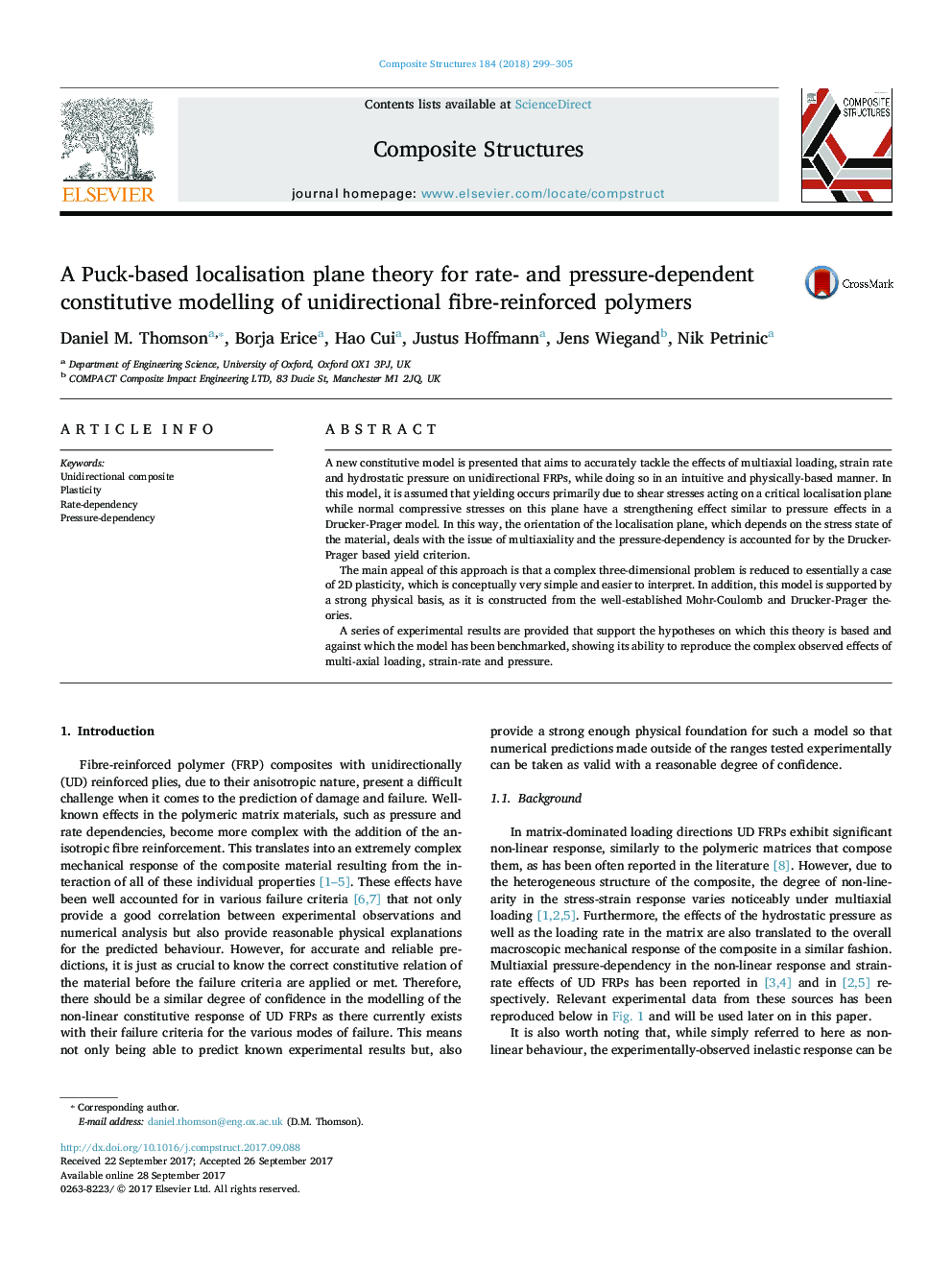| Article ID | Journal | Published Year | Pages | File Type |
|---|---|---|---|---|
| 4917587 | Composite Structures | 2018 | 7 Pages |
A new constitutive model is presented that aims to accurately tackle the effects of multiaxial loading, strain rate and hydrostatic pressure on unidirectional FRPs, while doing so in an intuitive and physically-based manner. In this model, it is assumed that yielding occurs primarily due to shear stresses acting on a critical localisation plane while normal compressive stresses on this plane have a strengthening effect similar to pressure effects in a Drucker-Prager model. In this way, the orientation of the localisation plane, which depends on the stress state of the material, deals with the issue of multiaxiality and the pressure-dependency is accounted for by the Drucker-Prager based yield criterion.The main appeal of this approach is that a complex three-dimensional problem is reduced to essentially a case of 2D plasticity, which is conceptually very simple and easier to interpret. In addition, this model is supported by a strong physical basis, as it is constructed from the well-established Mohr-Coulomb and Drucker-Prager theories.A series of experimental results are provided that support the hypotheses on which this theory is based and against which the model has been benchmarked, showing its ability to reproduce the complex observed effects of multi-axial loading, strain-rate and pressure.
